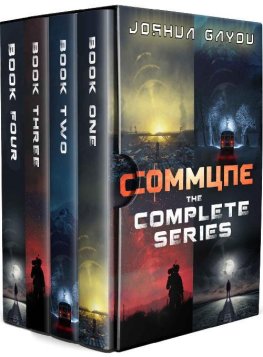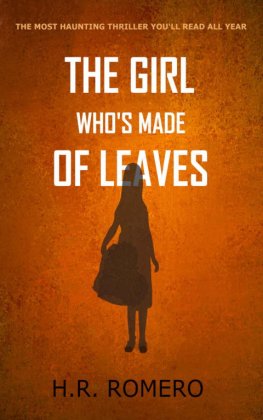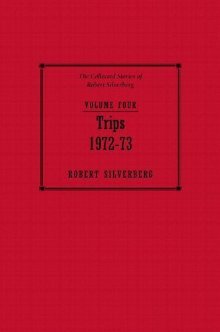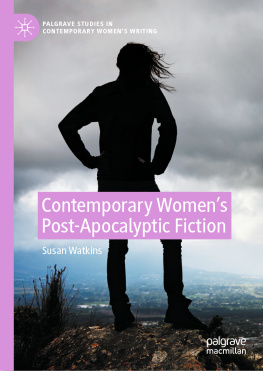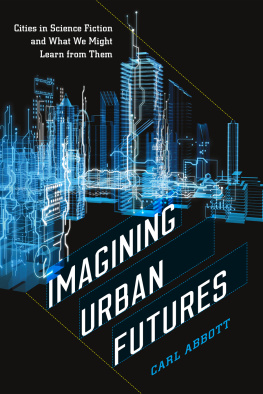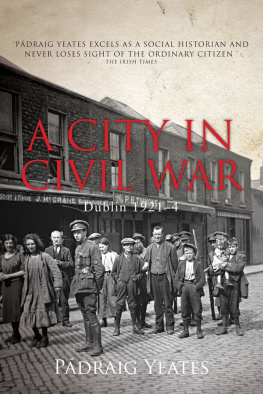American Cities in Post-Apocalyptic Science Fiction
MODERN AMERICAS
Modern Americas is a series for books discussing the culture, politics and history of the Americas from the nineteenth century to the present day. It aims to foster national, international, transnational and comparative approaches to topics in the region, including those that bridge geographical and/ or disciplinary divides, such as between the disparate parts of the hemisphere covered by the series (the US, Latin America, Canada and the Caribbean) or between the humanities and social/ natural sciences.
Series Editors
Claire Lindsay is Reader in Latin American Literature and Culture, UCL.
Tony McCulloch is Senior Fellow in North American Studies at the Institute of the Americas, UCL.
Maxine Molyneux is Professor of Sociology at the Institute of the Americas, UCL.
Kate Quinn is Senior Lecturer in Caribbean History at the Institute of the Americas, UCL.
American Cities in Post-Apocalyptic Science Fiction
Robert Yeates
First published in 2021 by
UCL Press
University College London
Gower Street
London WC1E 6BT
Available to download free: www.uclpress.co.uk
Text Author, 2021
Images Author and copyright holders named in captions, 2021
The author has asserted his rights under the Copyright, Designs and Patents Act 1988 to be identified as the authors of this work.
A CIP catalogue record for this book is available from The British Library.
This book is published under a Creative Commons Attribution-Non-Commercial 4.0 International licence (CC BY-NC 4.0), https://creativecommons.org/licenses/by-nc/4.0/. This licence allows you to share and adapt the work for non-commercial use providing attribution is made to the author and publisher (but not in any way that suggests that they endorse you or your use of the work) and any changes are indicated. Attribution should include the following information:
Yeates, R. 2021. American Cities in Post-Apocalyptic Science Fiction. London: UCL Press. https://doi.org/10.14324/111.9781800080980
Further details about Creative Commons licences are available at
http://creativecommons.org/licenses/
Any third-party material in this book is not covered by the books Creative Commons licence. Details of the copyright ownership and permitted use of third-party material is given in the image (or extract) credit lines. If you would like to reuse any third-party material not covered by the books Creative Commons licence, you will need to obtain permission directly from the copyright owner.
ISBN: 978-1-80008-100-0 (Hbk.)
ISBN: 978-1-80008-099-7 (Pbk.)
ISBN: 978-1-80008-098-0 (PDF)
ISBN: 978-1-80008-101-7 (epub)
ISBN: 978-1-80008-102-4 (mobi)
DOI: https://doi.org/10.14324/111.9781800080980
Contents
This book began in the research for my doctoral dissertation. I owe a debt of gratitude to my PhD supervisors Paul Williams and Jo Gill for sharing their enthusiasm, their time and their expertise, and for their tireless and unwavering advice and support, both during my years at the University of Exeter and beyond. Thank you to the professors whose classes inspired me to pursue this research and who offered help and encouragement with this project outside the classroom, especially Jeff Drouin, Bob Jackson, Erik Kwakkel and Sean Latham. Thank you to my students at NUCB and Okayama University for our vibrant and inspiring discussions about science fiction. I am very grateful to the editorial team and anonymous reviewers of Science Fiction Studies for their invaluable input on the article which provided the foundation for of this monograph. And my sincere gratitude to Chris Penfold, the team at UCL Press and the manuscripts anonymous reviewers for bringing this book into being; it has been a pleasure to work with and learn from you.
Thank you to the Arts and Humanities Research Council and the University of Exeter for funding my doctoral studies and the research trips, which could not have been undertaken otherwise. Thank you to the librarians and administrators who patiently supported me throughout my research at the University of Exeter, the University of British Columbia, the Margaret Herrick Library and the Huntington Library. I especially wish to thank Steve Hindle, Sue Hodson and Carolyn Powell for their generosity and support during my fellowship at the Huntington. I am also very grateful to my colleagues at Okayama University for welcoming me into the academic community and providing the support I needed to finish work on the monograph.
Of course, none of this would have been possible without my friends and family, and most of all Sachi; you have kept me going through it all. And lastly, thank you to my parents, for always being encouraging, motivating and supportive.
Modern American cities have inspired imaginings of ruin since their inception. In all forms of fiction, across print, visual, audio and digital media, there are texts depicting American cities in varying stages of post-apocalyptic deterioration, their familiar skylines and recognizable landmarks bearing the effects of any number of potential apocalypses, both natural and human-made. These depictions seem to transcend traditional boundaries, with post-apocalyptic urban spaces appearing in popular and literary works of fiction, in texts with a range of tones from the sombre to the comedic, and intended for wide audiences, from adults to young children. Despite the number of these fictions and the frequent similarities between the visions they present, their production and popularity show few signs of decline. Instead, as media formats have emerged, developed and risen in importance, post-apocalyptic science fiction (sf) has often been one of the first types of fiction to utilize and test the boundaries of these cutting-edge representational forms, while simultaneously proliferating in established media.
The popularity and persistence of visions of urban destruction in possible futures and alternative realities raises several questions. Why do we choose to repeatedly envisage, encounter and spend time within the environment of the fictional post-apocalyptic city? What about such a space is valuable for creators of fiction? And what is enticing or even pleasurable for audiences about our exploration of fictional post-apocalyptic urban space? These questions do not suggest easy answers. Compared with other sf visions of potential urban spaces, the post-apocalyptic city seems, at least on its surface, a grim, bleak, possibly even hopeless environment. Rather than a creative destruction, a concept derived from Karl Marx which proposes that new capitalist economic orders arise from the ruins of the old, the urban destructions of post-apocalyptic fiction frequently appear total and lasting, beyond repair or reclamation. Faced with this seeming finality and futility, what makes the post-apocalyptic city such fertile ground for fiction?
This book explores these questions through analysis of texts in a variety of media, including literary and pulp magazines, radio drama, cinema, comics, video games and the transmedia franchise, to identify how and why very different texts, released over the course of more than a century, have presented us with visions of the American city in ruins. The book argues that these fictional post-apocalyptic urban spaces have enduring appeal within American culture due to the unique opportunities they offer to explore complex, contemporary urban issues, especially when their creators utilize the unique affordances of the cutting-edge media of their day. In each of the sf texts and franchises analysed over the six chapters of this book, the post-apocalyptic American city, presented using the singular affordances of their new or developing media, is shown to create a space for confronting and tackling urgent urban issues in unique and provocative ways.





